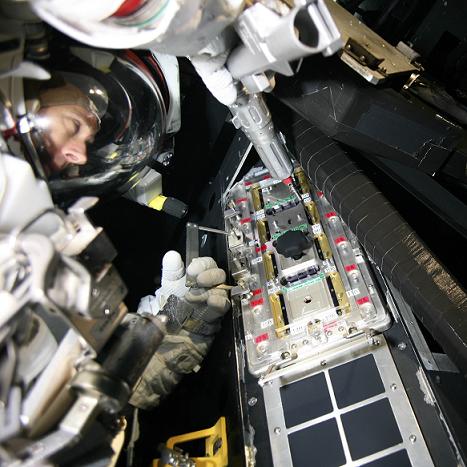At the planned altitude, above 500 km, fragments of space are pleasant to them, when the small ones will be absorbed by the shuttle, and the large ones will be avoided - the concern is with the medium ones

The space shuttle Atlantis will be at high risk of serious damage from space debris and tiny space rocks orbiting the orbit where it will meet the Hubble Space Telescope next month.
NASA's shuttle program manager, John Shannon, said Atlantis and its seven crew members face additional risk due to their destination. "It's dangerous to mourn because we're flying high," Shannon said in a press briefing.
Atlantis is scheduled to take off on October 10 with seven astronauts on an 11-day mission to upgrade the Hubble Space Telescope, which has been in space for 18 years. The mission will be commanded by Scott Altman, and the other team members plan to perform five "back-to-back" space missions during the flight to install new cameras, replace batteries, gyroscopes and guidance equipment, repair devices that were not designed to be repaired in space and add a docking mechanism to the Orion spacecraft, and a thermal insulator.
The former astronaut and commentator for the Fox network, Tom Jones, said today on the network's broadcasts that at a lower altitude of about 300 km, where the space station hovers, the atmosphere takes care of pumping in the dangerous fragments and against the small fragments the shuttle is designed to absorb their impact. However, as you increase in altitude, and in particular at the 500 km altitude to which the mission is planned, there are many large fragments that NASA monitors and the shuttle will occasionally be forced to perform evasive maneuvers. The problem is with the fragments of medium size - for example the size of an olive or a tennis ball, which cannot be observed by radar and on the other hand the shuttle will not be able to absorb them as it absorbs the tiny stones. In any case, Jones emphasizes, NASA will have a shuttle on standby at the launch pad for the crew rescue mission in case of any problem.

6 תגובות
What an asshole!
I saw materials at the annual UFO conference that could shed light on NASA's deliberations
http://www.youtube.com/watch?v=pzZeCeZt5mc
for cool:
They don't know where the waste is, on which route, in which direction and at what speed it is moving.
After all, the whole problem is that it is waste that is not monitored and cannot be discovered in time.
Besides - matching the speed to that of one piece of waste is in conflict with matching it to that of another piece of waste.
Don't forget - and this is the point that probably misled you, that through each point pass an infinite number of elliptical orbits with the center of the Earth at one of their foci.
They can't fly so that the speed of the shuttle will be the speed of the debris in the direction of their trajectory?, then their relative speed will be zero
Does the atmosphere care about pumping? Because of the friction with the upper atmosphere the small pieces fall to the earth and burn up
Absorb tiny stones? Not only rocks, but especially man-made space debris...
It is said that there was once a car accident between two police cars and four people were killed:
Two in the accident and two in recovery.
I'm not comparing but it just reminded me.